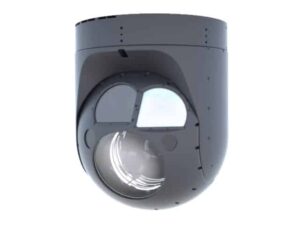 Elbit Systems has announced the launch of the SPECTRO XR (Extra Range), the company’s latest and most advanced electro-optic payload developed for Intelligence, Surveillance, Target Acquisition and Reconnaissance (ISTAR) missions.
Elbit Systems has announced the launch of the SPECTRO XR (Extra Range), the company’s latest and most advanced electro-optic payload developed for Intelligence, Surveillance, Target Acquisition and Reconnaissance (ISTAR) missions.
SPECTRO XR is an ultra-long-range, day/night, multi-spectral electro-optical ISTAR system that provides 20” payload performance in a 15” payload. The heart of the system is a large multi-spectral imaging system that combines multiple cameras into one, allowing it to significantly improve performance without increasing size and weight. SPECTRO XR implements up to 9 advanced and fully digital sensors (Medium Wavelength Infrared – MWIR, Visible and Near Infrared – VNIR and Shortwave Infrared – SWIR) and lasers with a very high level of stabilization, providing users with high performance in adverse weather conditions. The modular design enables users to select the configuration best suited to their needs, both in terms of performance and cost.
Find suppliers of Electro-Optical Systems >
The system can be installed on a variety of platforms including: rotary and fixed-wing manned and unmanned systems, aerostats, naval vessels and land applications. A wide variety of command and control interfaces enable simple integration of the SPECTRO XR with various systems onboard the target platform, such as mission computers, radar, data-links and helmet-mounted tracking systems. Inherent in the SPECTRO XR system are additional features such as a GPS, DVR (Digital Video Recording) and moving map that can provide a cost-effective avionics upgrade with minimal space, weight and integration efforts.
SPECTRO XR implements image fusion (MWIR-Medium Wavelength Infrared, Visible and Near Infrared-VNIR, SWIR-Shortwave Infrared), auto image enhancement, augmented reality, multi-layered pictures and geo-location in order to reduce operator workload. This combination of characteristics, along with advanced mission capabilities, make it suitable for missions such as surveillance, targeting and fire control as well as search and rescue.


















